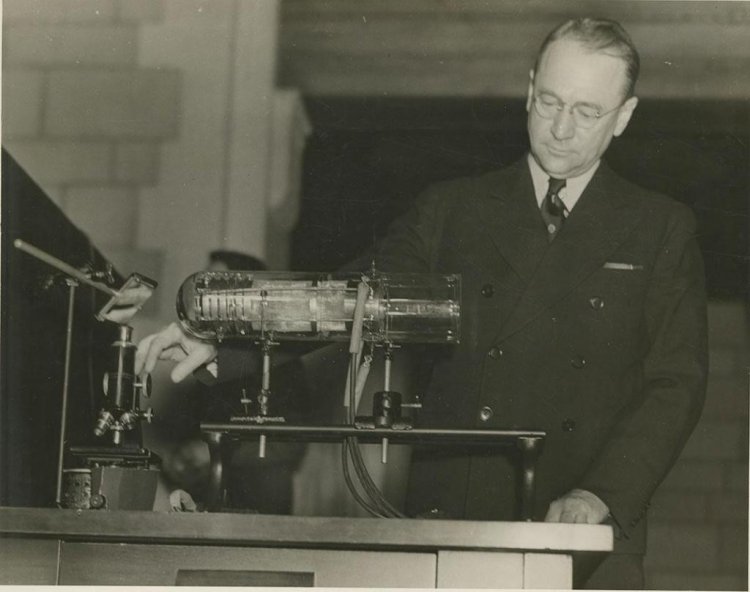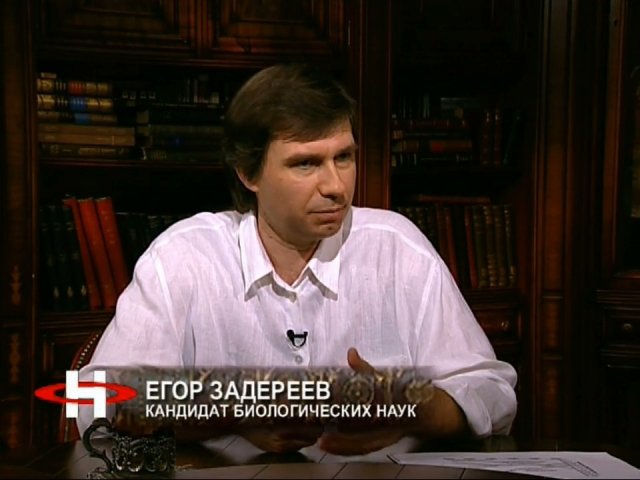Official:
Vladimir Kosmich Zworykin. July 17 (29), 1888 – July 29, 1982. Russian and American engineer. One of the inventors of modern television.
Life and Work:
1. Herodotus is considered to be the father of history. Nikolay Yegorovich Zhukovsky – the father of Russian aviation. And Vladimir Kosmich Zworykin, a Murom native, Russian engineer and American inventor, is rightfully called the father of television. Russian Gift to America is the title of a documentary film dedicated to Zworykin.
2. His father, merchant Kozma Zworykin, a major bread merchant and steamboat owner, was no stranger to progress – he funded the first telephone line in Murom.
3. “I immediately liked going to school, and I got upset if I had to miss classes because of illness or bad weather,” Zworykin wrote in his memoirs. “Entering a non-classical school has changed my life significantly. I soon gave up being taken to school in our carriage and walked down the street with the rest of the boys. We played lapta and gorodki, swam in the river, and skated in winter.”
4. After leaving the Murom non-classical school, Zworykin was sent to the St. Petersburg Institute of Technology. Vladimir Zworykin’s fate had been already waiting for him there: it was Professor of Physics Boris Lvovich Rosing, who had recently filed an application for a “Method for the electrical transmission of images over a distance” and received patent No.18076 for it.
5. Vladimir Zworykin enthusiastically started to help Professor Rosing in his experiments with “far-seeing.” While his peers were eagerly taking part in the first Russian revolution, Zworykin worked with small parts and sucked out the air with a special pump assembling the device invented by Rosing.
6. However, Vladimir Zworykin did not avoid participation in political activities: it was not possible at the time. “We got involved in political activities, sometimes illegal, attended numerous meetings, engaged in propaganda among workers, visited meetings at factories, etc. This was common for the intelligentsia of the time, especially for students, not only in the capitals, but also in such provincial cities as Murom.”
7. “I was later seized when distributing leaflets calling for the second Duma elections and spent two weeks in prison.” However, Zworykin found his stay in prison quite pleasant: his student friends were nearby, and their girlfriends brought them treats.
8. After the graduation, Zworykin faced a choice: to stay at the institute and work with Professor Rosing, or, as his father insisted, to return to Murom and take part in the family business. The commercial path did not attract the future inventor of television. A compromise was found: he went to France to continue his studies with Professor Paul Langevin and promised to return to Murom later.
9. The plans were ruined by the World War. From France, Zworykin went to the University of Berlin, and it was when the hostilities broke out. With great difficulties, Vladimir Kosmich returned to Russia via Denmark and Finland and was immediately drafted into the army.
10. Quite miraculously, Zworykin was not shot after the February revolution: one of his company’s soldiers complained to the revolutionary tribunal that Officer Zworykin was mocking the soldiers – he forced them to repeat the numbers into a small hole, while he was in another room fiddling with some unknown and suspicious device.
11. When Zworykin realized that a civil war was about to start, he decided not to participate in it and to get out of the country by any means.
12. His way to the United States was neither straight nor easy. It ran through Yekaterinburg, where he was arrested and barely escaped execution, then through Omsk and cooperation with the Kolchak government. Zworykin had to return back to Omsk from his first trip to the US for radio equipment, and only his second one was for good: the Kolchak government fell, and there was nowhere to return to. Later, Zworykin recalled that he nearly circumnavigated the globe twice in 18 months.
13. In 1926, Zworykin was awarded his Ph. D. degree at the University of Pittsburgh.
14. In the United States, Zworykin continued to work on image transmission over a distance. On December 29, 1923, Vladimir Kosmich filed a patent application for a device for transmitting an image by converting a video image into a set of radio pulses, and then restoring the image on a cathode-ray tube screen. Later he would say about the experiments of 1923: “The demonstration was not very impressive; the transmitted image was a cross. In the reception cathode room, a cross was also visible, only less contrasting and sharp.” The inventor joked that it was not like television, but like a barely visible vision.
15. The patent was granted only on December 20, 1938. Well, it seems that the Americans could not believe that some Russian invented what we now call television. During this time, Zworykin managed to design a television receiving tube, kinescope, and to refine the design of the transmitting tube, iconoscope.
16. In 1933, the Russian American was invited to visit the USSR – in the very same year, when his teacher, Rosing, who was exiled to Arkhangelsk, died. In Tbilisi, where Zworykin’s brother lived, he was introduced to Secretary of the Communist Party of Georgia Lavrentiy Beria.
17. Before World War II, Zworykin traveled a lot with lectures: interest in television was high in the world. Among other places, he visited Mandatory Palestine. But the air strongly smelled of war, and he barely made it out of the Middle East via Rome, Paris, and Scotland, where he delivered a report on electron microscopy at an international conference.
18. Tickets to the Athenia steamer were booked for all participants of the conference. But Zworykin’s luggage did not arrive from the Middle East, and it seemed unacceptable to him to travel on an English ocean liner without a restaurant suit. A few days later, Zworykin learned from the newspaper that his scrupulousness in matters of etiquette had saved his life: Athenia was sunk by a German submarine, and many passengers died.
19. Zworykin worked hard and fruitfully during the war and in the 50s-60s. His track record is impressive: night vision devices and aerial bombs with television guidance, an electronic scanning microscope and medical electronics, one hundred and twenty patents, and a plethora of awards.
20. In summer of 1959, Vladimir Zworykin participated in the American Exhibition in Sokolniki.
21. Vladimir Kosmich visited the USSR several times in the 60s and 70s. His native city, Murom, was closed for foreigners at the time, but Zworykin managed to circumvent the ban. In Vladimir, he took a taxi and went to his native land illegally. He also visited his father’s house: now it houses Murom Historical and Art Museum.
22. Vladimir Kosmich Zworykin was married twice. For the first time, he married a dental school student during World War I. In 1930, the scientist was widowed and many years later married Ekaterina Polevitskaya, who was then a professor at the University of Pennsylvania.
23. A member of the American National Inventors Hall of Fame, Vladimir Zworykin lived for exactly ninety-four years and died exactly on the day of his birth.
24. The inventor of television understood what kind of genie he let out of the bottle and forbade his own daughters to watch TV – he was afraid for their virtue. And when asked what he liked about the TV set most, Zworykin reportedly answered, “Its switch.”






















